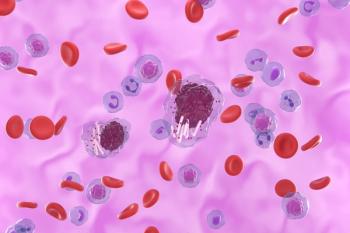
Mitotic Rate, Lymphovascular Invasion Among Risk Factors for Relapse in Melanoma
Key Takeaways
- Mitotic rate ≥1/mm² and residual tumor presence are linked to higher relapse risk in cutaneous melanoma patients post-excision.
- Lymphovascular invasion significantly correlates with worse relapse-free survival, highlighting its prognostic importance.
Patients with early-stage melanoma who experience relapse following wide local excision face worse survival outcomes.
Several factors that appear to increase the risk of relapse in patients with early-stage
The standard treatment for patients with stage IA, IB, or IIA cutaneous melanoma is wide local excision, first author Ilias Christodoulou, MD, PhD, and colleagues from the University of Pittsburgh explained. While the procedure has a high success rate, some patients experience relapse due to preoperative micrometastasis, and those patients face a significant risk of mortality.
Identifying which patients are most likely to relapse could help guide therapeutic decisions. Yet, the authors noted, there have been no studies comparing coding mutations in patients with early-stage cutaneous melanoma.1
In the new report, the investigators examined clinical and pathological factors associated with relapse in a cohort of 180 patients with stage IA to IIA cutaneous melanoma. Their goal was to identify factors that could help support whole-exome sequencing in patients with cutaneous melanoma.
Patients were diagnosed at the UPMC Hillman Cancer Center between 2003 and 2022 and were only included in the analysis if they had sufficient clinical data, underwent wide local excision with negative margins, and had a negative sentinel lymph node biopsy. The investigators matched relapse and non-relapse patients on a 1:1 basis, pairing them by age, stage, and gender. To be considered a non-relapse patient, patients had to have been relapse-free for at least 3 years, with documented follow-up within 18 months, the authors said.
The relapse cohort had a median age of 61 years, and the non-relapse cohort had a median age of 59 years. Rates of superficial spreading and nodular cutaneous melanoma were similar between the cohorts, but in line with previous research, survival rates were not. The non-relapse group had a 99% survival rate, while the relapse group had just a 49% survival rate.
In terms of relapse timing, the investigators found the plurality of patients relapsed between 1 and 3 years: 18.9% relapsed within the first year, 44.4% relapsed between 1 and 3 years, and 35.6% relapsed between 3 and 10 years. One patient relapsed after 10 years. Among those with relapse, 34% had local cases, 21% had cancer in their lymph nodes, and 44% had distant metastases.
The investigators found that having a mitotic rate ≥1/mm2 and the presence of residual tumor after wide local excision were more common in the relapse cohort than in the non-relapse cohort. In all time intervals, patients with mitotic rates ≥1/mm2 had worse relapse-free survival (HR, 1.99; P = .03).
Other factors associated with worse relapse-free survival were residual tumor in wide local excision (HR 1.83; P = .005) and lymphovascular invasion (HR 3.22; P = .02). Breslow thickness was associated with worse overall survival for patients with stage IIA disease (HR 1.86; P = .04), the authors said. Breslow thickness was associated with worse survival in all stages when the analysis was adjusted for rising mitotic rate or for having a mitotic rate above ≥2/mm².
The investigators said whole-exome sequencing will help define mutations tied to micrometastasis and help further refine risk stratification.
References
- Christodoulou I, Sander C, Wang S, et al. Melanoma dormancy: Predictors of relapse in resected early-stage cutaneous melanoma. Presented at: 2025 American Society of Clinical Oncology annual meeting; May 30-June 3, 2025; Chicago, Illinois. Abstract e21557.
- Landow SM, Gjelsvik A, Weinstock MA. Mortality burden and prognosis of thin melanomas overall and by subcategory of thickness, SEER registry data, 1992-2013. J Am Acad Dermatol. 2017;76(2):258-263. doi:10.1016/j.jaad.2016.10.018
Newsletter
Stay ahead of policy, cost, and value—subscribe to AJMC for expert insights at the intersection of clinical care and health economics.









































